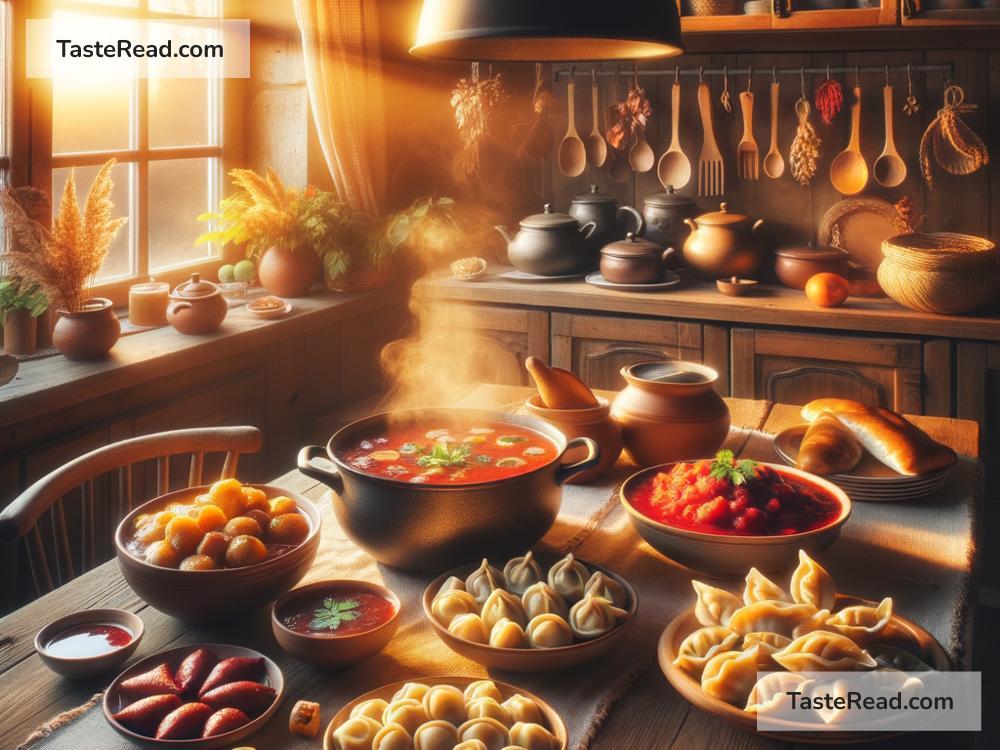Embracing the Warmth of the Kitchen: A Journey into Traditional Russian Comfort Foods
In the vast and culturally rich landscape of Russia, food is more than just sustenance. It’s a doorway to history, tradition, and the warm embrace of home. Learning to cook traditional Russian comfort foods is not just about mastering recipes; it’s about connecting with a rich heritage and bringing a piece of that warmth into your own kitchen. Whether you’re of Russian descent or simply a culinary adventurer, there’s a world of flavors waiting to unfold. Let’s embark on this delicious journey together.
The Heart of Russian Comfort: Where to Begin
Russian cuisine is a tapestry woven from the diverse regions of this expansive country. It’s hearty, fulfilling, and designed to provide comfort during the long, cold winters. To start this culinary adventure, you’ll need curiosity, a love for cooking, and the basics in your kitchen. Ingredients like potatoes, cabbage, beets, and grains like buckwheat are staples, along with sour cream, dill, and a variety of meats. With these at your fingertips, you’re ready to dive into the soul-warming world of Russian cooking.
Borsch: A Flavorful Legacy
No exploration of Russian comfort food would be complete without borsch. This beet soup, with its vibrant red color and deep, complex flavor, is a testament to the simplicity and richness of Russian cuisine. To make it, you’ll need beets, cabbage, potatoes, carrots, onions, and beef broth. The key to perfecting borsch is patience. Letting the soup simmer slowly allows the flavors to meld beautifully. Serve it with a dollop of sour cream and a sprinkle of fresh dill, and you’ve got a bowl of pure comfort.
Pelmeni: A Comforting Embrace in a Dumpling
Pelmeni are delightful little dumplings that encapsulate the heartiness of Russian food. Often filled with a mixture of minced meat, onion, and pepper, they’re a versatile dish that can be served in a variety of ways—boiled and buttered, in a soup broth, or even fried for a crispy twist. Making pelmeni from scratch is a labor of love. Mixing the dough, preparing the filling, and meticulously shaping each dumpling by hand is a meditative process that brings a sense of achievement and anticipation. Sharing a plate of pelmeni with friends and family, you share more than food; you share tradition.
Olivier Salad: A Dish of Celebration
Also known as Russian Salad, the Olivier Salad is a festive dish traditionally served during New Year’s celebrations but loved year-round. It’s a mayonnaise-based salad that includes boiled potatoes, carrots, eggs, peas, pickles, and often boiled chicken or bologna. Every Russian family has its own version, making it a personal and special addition to any meal. Preparing Olivier Salad is about balance—getting just the right texture and harmony of flavors. It’s a celebration in a bowl, bringing together ingredients in a sumptuous dance of creamy, crunchy, and refreshing.
Syrniki: Sweet Morning Comfort
Syrniki are thick, cottage cheese pancakes that offer a sweet start to the day or a delightful dessert. The key ingredient, cottage cheese (or tvorog), gives these pancakes their unique texture and flavor. Mixed with flour, eggs, sugar, and sometimes raisins, the batter is then fried to golden perfection. Served with a spoonful of sour cream or a dollop of jam, syrniki are a testament to the comforting simplicity of Russian cuisine.
Embracing the Process
Learning to cook traditional Russian comfort foods is more than following recipes; it’s about embracing the process and the stories behind the dishes. Each ingredient, each step, carries a piece of history, a fragment of family tradition. It’s a journey that demands patience and offers not just delicious outcomes, but also a deeper connection to the culture and the warmth of the Russian spirit.
A World of Flavors Awaits
Embarking on this culinary adventure opens up a world of tastes, textures, and traditions. Whether you’re rolling out dough for pelmeni, simmering a pot of borsch, or mixing an Olivier Salad, you’re participating in a centuries-old tradition of comfort and hospitality.
Cooking traditional Russian comfort foods is a journey worth taking. It’s an exploration of flavors, an embrace of cultural heritage, and most importantly, a way to bring the comforting warmth of Russian cuisine into your own home. So tie on your apron, warm up the stove, and let the adventure begin. The heart of Russian comfort cooking is waiting to be discovered, one delicious bite at a time.


